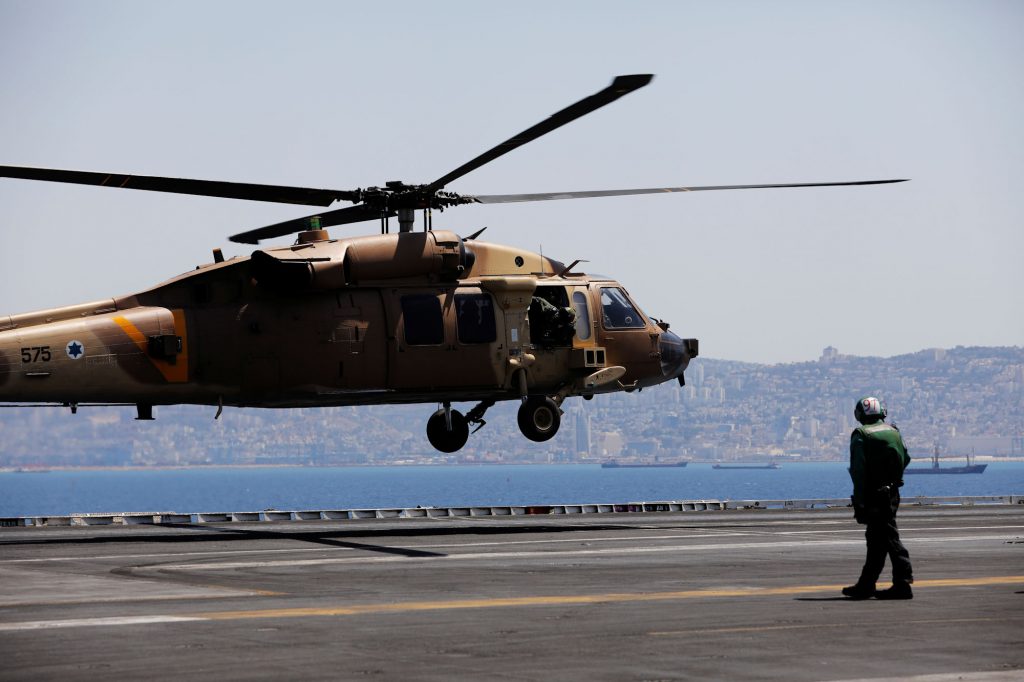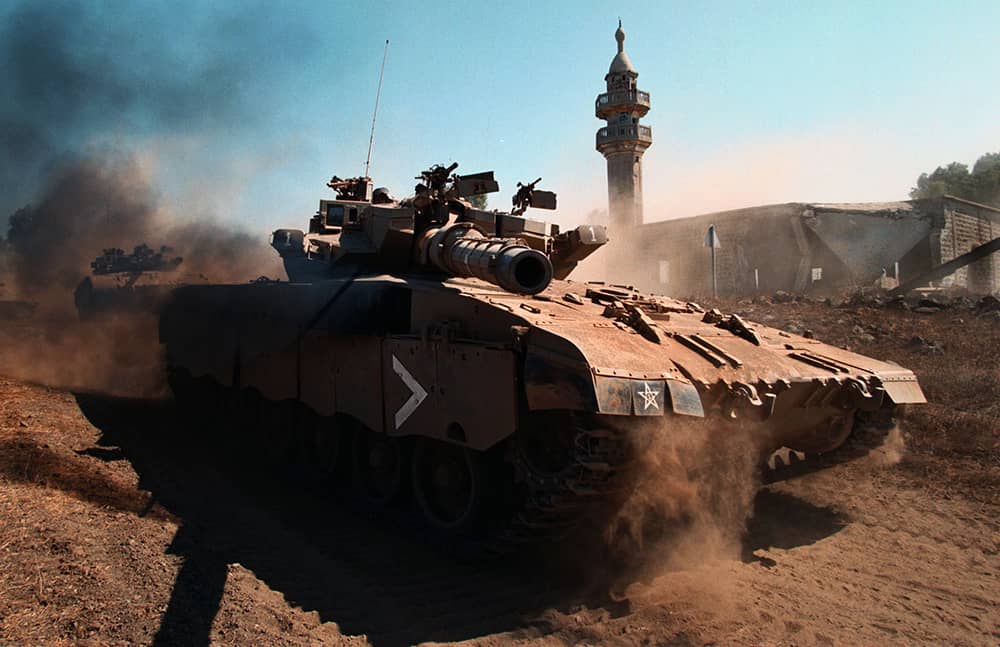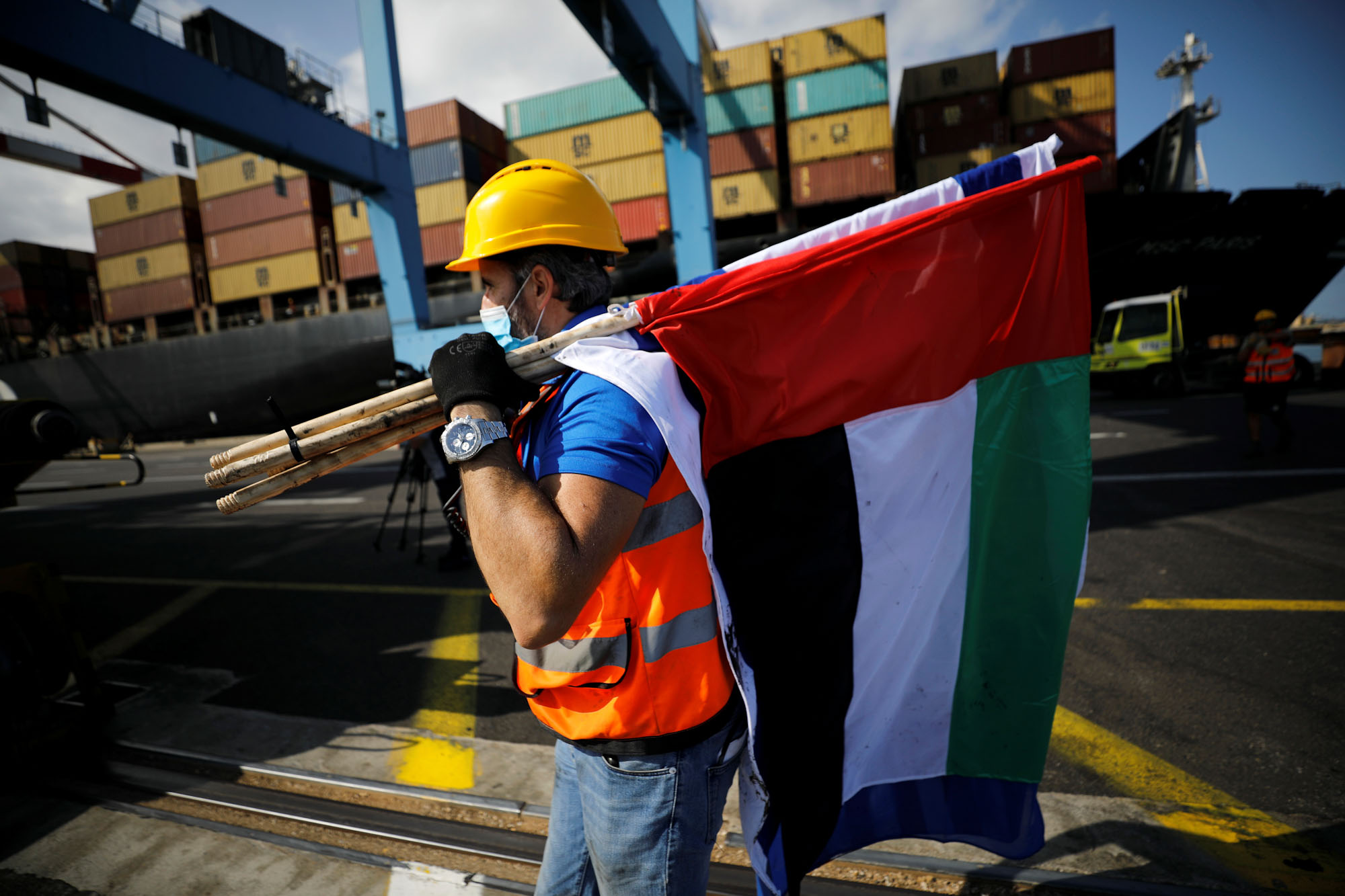For much of the last decade, I served as the commander of the US Navy Sixth Fleet and Allied Joint Forces in the Mediterranean. This is thus written from the vantage point of my headquarters in Naples, Italy, the halfway point in this maritime domain. During my time of service there, I forged relationships with the navies of southern Europe, North Africa, and the Levant, including Israel. Such navy-to-navy relationships are traditionally strong and largely impermeable to the changing nature of the political environment. We depend on one another in times of crisis, and when directed to defend our collective security interests by civilian authority, we are stronger together. It is this insight, bolstered—as it is, today, for many of those serving in US forces—by personal recollections and interactions, that I wish to bring to bear on the discussion of the US–Israeli relationship and its role in the region.
In this respect, I have always viewed naval forces as an extended arm of diplomacy. Our mission is, first and foremost, to deter aggression, but in the final analysis, when called upon, we must win our nations’ wars. In other words, we will fight to win, but we want to win without fighting. It is for this reason that I want to commend the spirit of the Abraham Accords. My journey as an advocate for both peace and cooperation, as well as for the special position of the US–Israeli relationship, began long before today.
A Port of Call
On a clear blue day in the Eastern Mediterranean in 1994, the USS Narwhal made her way to Haifa, Israel. The boat had left its homeport of Charleston, South Carolina, a few months before and the crew had worked hard in support of US and NATO interests throughout the Mediterranean theater of operations. Now it was time for a “hot wash-up”1 in Haifa. Sailors join the Navy to see the world, and the young crew of USS Narwhal were no exception. All were excited to have a port visit in Israel for the first time.
As the executive officer, I was also the unofficial “morale officer” for the wardroom and crew. Not unlike their contemporaries, Narwhal sailors had an affinity for clubs and bars wherever we put to shore. While there is nothing wrong with getting a beer with your shipmates, I reminded everyone that time would pass quickly in Israel: go out and see the Holy Land for all of its glory, its beauty…and in some cases its history of violence, tragedy, and triumph. Our husbanding agent and the United Services Organization in Haifa enabled bus trips to Tel Aviv, Jerusalem, the Dead Sea, Masada, and the Sea of Galilee. I was delighted that almost all of our crew signed up for one or more of these tours.
Meanwhile, I headed out in the wee hours of the morning with the skipper and chief of the boat (our senior enlisted leader) on a small van tour that would take us to stops in the West Bank, the Golan Heights, the Sea of Galilee, and the border of Lebanon. We stopped in the Valley of Tears, where our guide regaled us with stories of one of the bloodiest battles of the Yom Kippur War in October 1973. We visited a kibbutz that still had a rusted and destroyed Syrian tank at the entrance gate and drove to areas where access was still restricted due to the prolific presence of uncharted landmines. We lunched in a Druze village in the Golan Heights and from up high, we looked down across the border into Syria. Each of us was struck by the contrast of lush green irrigated farmland on the Israeli side of the border and the arid and undeveloped land on the Syrian side. We stopped to talk with mounted soldiers from the Israel Defense Forces (IDF) patrolling the Israeli side of the Golan. Some of them were older reservists and they were happy to see American service members, particularly submariners, showing an interest in their share of the task. We came back with a better understanding of Israel’s security challenges.


USS Narwhal’s few days of liberty in Haifa went by quickly and when everyone returned safe and sound to the boat and conducted pre-underway checks, I had many members of the crew thank me for encouraging them to take advantage of a potentially once-in-a-lifetime opportunity to tour the Holy Land. The boat was abuzz for many days with talk of liberty in Israel. Every member of the crew recognized that Israelis were not just gracious hosts but that they lived in a pretty rough neighborhood—surrounded on all sides (including the seaside) by threats to their very existence. Likewise, it was readily apparent that national security was not just left to professional soldiers as in the US case; in Israel, almost everyone served in the IDF and they understood that their service and sacrifice was for the greater good. In fact, many Americans could take a lesson from the Israeli example.
Cooperation at the Highest Level
Such insights remained relevant and stayed with me more than a dozen years later, on my next visit to Israel in 2007. By then, having gone on to command my own submarine and then a squadron of submarines, I had been selected by Admiral Mike Mullen, chairman of the Joint Chiefs of Staff, to be his executive assistant. In this position, I was privileged to be with him on all his trips overseas. Although Admiral Mullen had been to Israel before, this was his first trip as the chairman of the Joint Chiefs of Staff, and there was much on the agenda. After landing in Tel Aviv, we were whisked to a downtown hotel and a reception attended by the Israeli chief of staff, Lieutenant General Gabi Ashkenazi, and director of political-military affairs at the Israeli Defense Ministry, Major General (res.) Amos Gilead. I would meet both men again during my follow-on assignments in Europe. The next day, I accompanied Admiral Mullen in a call with the Israeli defense minister.
Capping off our tour, we boarded a Blackhawk helicopter with Ashkenazi’s deputy chief of staff, then Major General Benny Gantz (later chief of staff and now defense minister), for an extensive tour of Israel by air. As we flew along the sea and then over the West Bank, Gantz2 chronicled his career and a series of events that had taken place during his lifetime. Reflecting the challenges and fragility of Israeli security, he included the infamous attack on Tel Aviv’s Savoy Hotel, when armed militants stormed it from the sea in 1975. After flying north over the Golan Heights and along the tense border with Lebanon (familiar territory from my previous trip), we turned south and stopped near the border of the Gaza Strip for lunch in the field with local IDF commanders. In a few short hours, the chairman was able to see the full extent of the Israeli security problem. It was compelling, and it remains a lesson learned as to the challenges that make US–Israeli cooperation so vital.
The Talking Stick
Still, the role of the US—and of its relationship with Israel—is also to create the conditions for progress in Israel’s interactions with others in the region with whom the American administration, including the military, had established solid relations over the years. An image from my years with Admiral Mullen comes to mind. The chairman was a believer in Dr. Steven Covey and his Seven Habits of Highly Effective People. One day, after a private meeting, Mullen showed me a small souvenir that Dr. Covey had left for him—it was a talking stick, and the admiral was eager to embrace the concept and test it in the conduct of his duties.
Covey writes about the talking stick—given to him by tribal chieftains of indigenous peoples in Canada—in his book, The 8th Habit. Having been an integral part of indigenous peoples’ governance for centuries, it is used for enhancing communication between different parties and consequently for conflict resolution. Two simple rules apply: First, the person holding the stick has the floor and cannot be interrupted. Second, with a captive audience, the holder of the stick must present the views of the opposing party through the lens of their eyes. Hold that thought…
Since my introduction to the concept of the talking stick in 2007, much has happened in terms of conflict in the Middle East. Shortly afterward, Hamas rockets launched into Israel in 2008 precipitated a clash in Gaza with over a thousand Palestinians and more than a dozen Israelis killed. Attempts by the Obama administration to negotiate a final status between Israel and the Palestinian Authority broke down in 2014. Political upheaval engulfed the region in 2011. Civil war broke out in Syria, drawing in external forces, with Russia using it to establish a permanent presence in the Eastern Mediterranean. Throughout this period, malign Iranian influence continued to threaten the US and her allies, including Israel. In 2017, the Trump administration recognized Jerusalem as the capital of Israel and later Israel’s right to sovereignty over the Golan Heights. Trump’s ideas created a rupture between the Palestinian Authority and the US, leading, among other things, to the closure of the PLO office in Washington, DC.
While this aspect of US policy came under fire in political and professional circles around the world, in 2020 an extraordinary turn of events made it possible for the US to broker the Abraham Accords, between the United Arab Emirates and Israel, putting both nations on a path toward normalizing their relationship. Even more encouraging, other nations including Bahrain, Sudan, and Morocco followed suit. Israel, in turn, as a gesture of goodwill toward the UAE, agreed to drop all plans of unilaterally annexing some areas in the West Bank. Each side, to some extent, was willing to see things from the other’s perspective.
Thus, applying the talking stick concept, the Abraham Accords were a breakthrough in Arab–Israeli relations that should have been celebrated more loudly. Not since the Camp David Accords in 1978 or Israel’s peace with Jordan in 1994 has such an agreement been formalized; the Abraham Accords represent a landmark agreement that was unfortunately drowned out in the US by a particularly divisive presidential election and by the simultaneous loss of 600,000 American lives to COVID-19.
Nevertheless, it is worth evoking Covey:
The Abraham Accords prove that it is possible for nations with long-standing differences to find common ground and move forward, not backward. There are many more nations on the list that can contribute to peace in the Middle East, particularly on the Israeli–Palestinian question. Accordingly, I support the appointment of a US Special Envoy for the Middle East currently being discussed in the Biden administration, but it will take more than one person to resolve the current crisis. If appointed, my advice to the ambassador would be to put an indigenous peoples’ talking stick in her or his briefcase when traveling, and use it to narrow the gaps of perception that still pervade.
1 “Hot Wash-Up” is a debriefing conducted immediately after an exercise has ended. In the submarine force, it is a carryover from the World War II diesel boats, when after an approach and attack on a convoy of enemy ships, the fire control team would huddle in the boat’s wardroom to review lessons learned and make necessary changes prior to the next engagement. This culture of continuous process improvement is widely embraced by the nuclear submarine navy of today.
2 I later returned to Israel as the Commander of the US Sixth Fleet and paid a courtesy call on Lt. Gen. Benny Gantz, then chief of the IDF. I recall that, unlike most high ranking military officers, Benny Gantz’s office was stark and functional. There was only one photo on his bookshelf—that of his mother, a Holocaust survivor. When I asked about the photo, he told me that it was his mother and he said she is the reason he does what he does… As an American and friend of Israel, I never forgot that.

